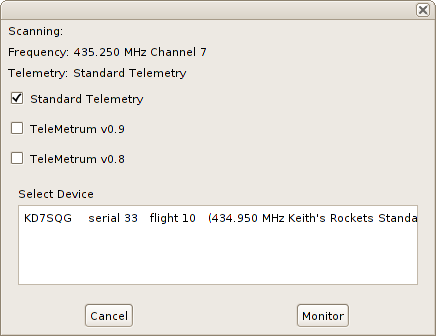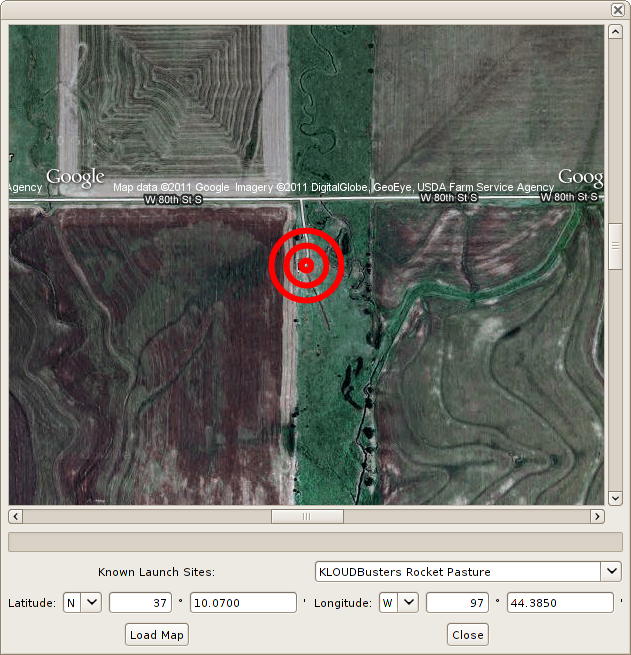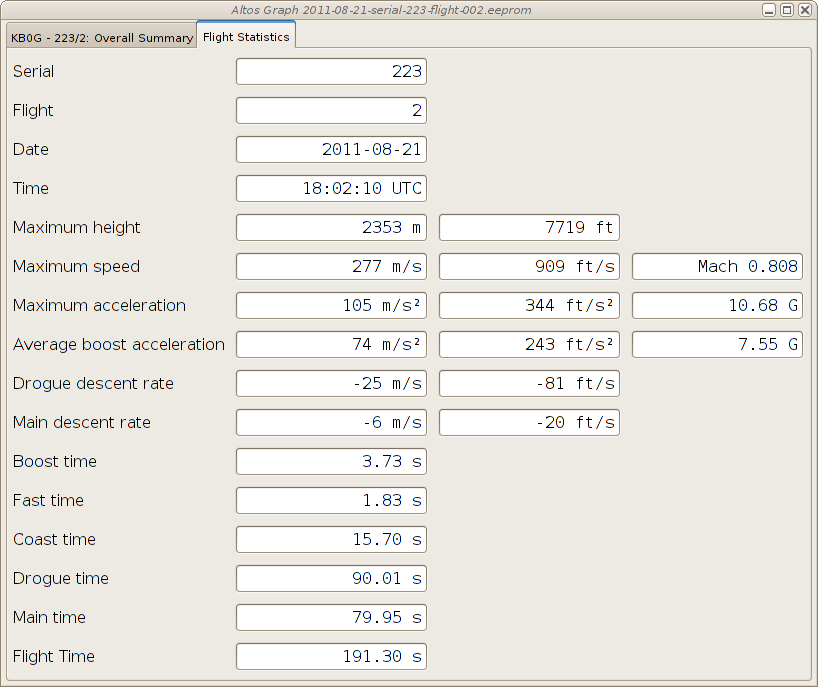AltOS 1.0 — TeleMini support and a host of new features
Bdale and I are pleased to announce the release of AltOS version 1.0.
AltOS is the core of the software for all of the Altus Metrum products. It consists of cc1111-based microcontroller firmware and Java-based ground station software.
AltOS Firmware — TeleMini support, Kalman Filtering and more
Support for the new TeleMini altimeter is included in version 1.0 along with a wealth of other new features:
Change telemetry to be encoded in multiple 32-byte packets. This enables support for TeleMini and other devices without requiring further updates to the TeleDongle firmware.
Previous versions of the firmware used a large monolithic telemetry packet 95 bytes long. The old single-packet format included all of the rapidly updating data coming from the on-board sensors, along with slowly changing GPS data and never-changing configuration data. Not only were the packets large (reducing the reliability of reception), they were also device-specific, encoding precisely the set of information available in TeleMetrum.
The new telemetry system uses mulitple different formatted telemetry packets, all 32 bytes in length, transmitting rapidly changing data often and other data more slowly. This should improve reception, but more importantly, allows for different devices to send different sets of data.
Within the TeleDongle, this change was implemented by removing all of the telemetry decoding logic from the embedded device and moving it to the AltosUI java code running on the host. This means that the TeleDongle can now receive arbitrary telemetry packets without having new firmware installed.
Support operation of TeleMetrum with the antenna pointing aft. Previous firmware versions required the antenna to be pointing upwards, now there is a configuration option allowing the antenna to point aft, to aid installation in some airframes.
A TeleMetrum user, DK Duncan, changed the firmware on his board to flip the accelerometer ADC values around. This produced something that worked on the ground, so he went and flew it. And it just worked.
I added this as a configuration option, including all of the Java code to change it. Nice that any Altus Metrum user can try things like this out and then have them get added in the next version of the software.
Ability to disable telemetry. For airframes where an antenna just isn't possible, or where radio transmissions might cause trouble with other electronics, there's a configuration option to disable all telemetry. Note that the board will still enable the radio link in idle mode.
Terry Lee is taking a TeleMetrum board for a ride during LDRS this year, but with TeleMetrum mixed in with a pile of other electronics, he didn't want us transmitting during flight and causing potential RFI issues with other boards in the air frame. Instead of building a custom version of the firmware, we just made this a configurable mode.
Arbitrary frequency selection. The radios in Altus Metrum devices can be programmed to a wide range of frequencies, so instead of limiting devices to 10 pre-selected 'channels', the new firmware allows the user to choose any frequency in the 70cm band. Note that the RF matching circuit on the boards is tuned for around 435MHz, so frequencies far from that may reduce the available range.
Kalman-filter based flight-tracking. The model-based sensor fusion approach of a Kalman filter means that AltOS now computes apogee much more accurately than before, generally within a fraction of a second. In addition, this approach allows the baro-only TeleMini device to correctly identify Mach transitions, avoiding the error-prone selection of a Mach delay.
Developing this feature made extensive use of the simulator which runs the flight management code using sensor data captured on previous flights. Somehow, we've managed to collect log data from over 100 flights; replaying them on the ground means that even before the first flight with the new firmware, we were confident that it would work.
AltosUI — New Features
AltosUI has also seen quite a bit of work for the 1.0.1 release. Of course, many of the changes in AltosUI are to accomodate the new TeleMini altimeter and changes in the AltOS firmware for TeleMetrum. In addition, we've also added lots of new features in response to user requests.
Add main/apogee voltage graphs to the data plot. This provides a visual indication if the igniters failed before being fired.
Scan for altimeter devices by watching the defined telemetry frequencies. This avoids the problem of remembering what frequency a device was configured to use, which is especially important with TeleMini which does not include a USB connection.
Monitor altimeter state in "Idle" mode. This provides much of the information presented in the "Pad" dialog from the Monitor Flight command, monitoring the igniters, battery and GPS status withing requiring the flight computer to be armed and ready for flight.
Pre-load map images from home. For those launch sites which don't provide free Wi-Fi, this allows you to download the necessary satellite images given the location of the launch site. A list of known launch sites is maintained at altusmetrum.org which AltosUI downloads to populate a menu; if you've got a launch site not on that list, please send the name of it, latitude and longitude along with a link to the web site of the controlling club to the altusmetrum mailing list.
Flight statistics are now displayed in the Graph data window. These include max height/speed/accel, average descent rates and a few other bits of information. The Graph Data window can now be reached from the 'Landed' tab in the Monitor Flight window so you can immediately see the results of a flight.




